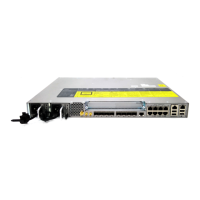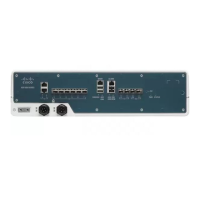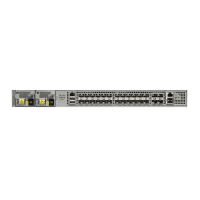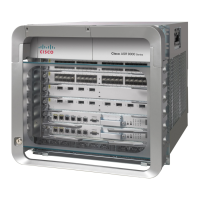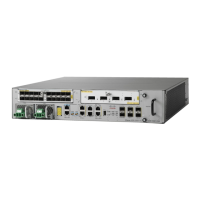A frame passes each configured match criterion until the correct matching point is found. If a frame does not
fit any of the matching criteria, it is dropped. Default criteria can be configured to avoid dropping frames.
The following types of commands can be used in an EFP:
• Rewrite commands—In each EFP, VLAN tag management can be specified with the following actions:
• Pop—1) pops out a tag; 2) pops out two tags
• Push— pushes in a tag
• Translate—1 to 1) changes a tag value; 1 to 2) pops one tag and pushes two tags; 2 to 1) pops two
tags and pushes one tag; 2 to 2) changes the value for two tags
• Forwarding commands—Each EFP specifies the forwarding command for the frames that enter the EFP.
Only one forwarding command can be configured per EFP. The forwarding options are as follows:
•
Layer 2 point-to-point forwarding to a pseudowire tunnel
•
Multipoint bridge forwarding to a bridge domain entity
•
Local switch-to-switch forwarding between two different interfaces
• Feature commands—In each EFP, the QoS features or parameters can be changed and the ACL can be
updated.
Trunk Ports
An Ethernet interface can be configured as a trunk port (interface). A trunk port, also known as a trunk, is a
point-to-point link between a networking device and another networking device. Trunks carry the traffic of
multiple VLANs over a single link and allow you to extend VLANs across an entire network. A trunk port
configured on the interface with two or more VLANs can carry traffic for several VLANs simultaneously.
To correctly deliver the traffic on a trunk port with several VLANs, the device uses the IEEE 802.1Q
encapsulation or tagging method.
How to Enable Trunk EFP Support
Enabling Trunk EFP Support
To enable Ethernet flow point (EFP) support on a trunk port or trunk interface, complete the following steps.
When configuring TEFP on a port-channel interface, ensure that the port interface is always up.Note
TEFP is supported on a PC interface and on a Gigabit interface. The procedure listed below is for TEFP
configuration on a PC interface. Similar procedure is used for TEFP configuration on a gigabit interface.
Note
Carrier Ethernet Configuration Guide (Cisco ASR 920 Series)
3
Trunk EFP Support
Trunk Ports
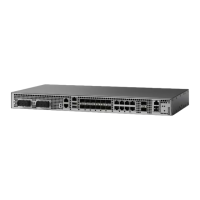
